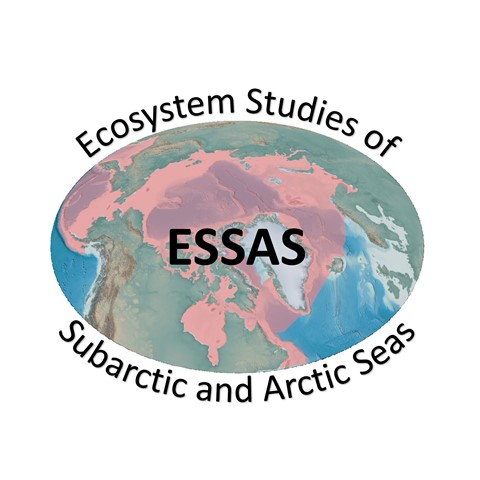Session 1: Novel applications of remote sensing in Subarctic and Arctic marine ecosystems
Chairs: Sei-Ichi Saitoh, Hajo Eicken, Takafumi Hirata
Subarctic and Arctic marine ecosystems are undergoing rapid environmental changes and satellite observations have played a crucial role in documenting and understanding these changes, in particular changes in ice cover, surface temperatures (and more recently surface salinities), and primary productivity. Satellites and other remote sensing technologies are also used to track vessels, monitor zooplankton, fish, and whales, and to provide real-time observations or operational forecasts for marine traffic and science operations, emergency responses, fisheries and other uses. This session seeks contributions that highlight innovative applications of remote sensing and satellite oceanography covering all aspects of monitoring, understanding and managing high-latitude marine ecosystems and habitats. The session will include a brief tutorial and demo on tools and capabilities for processing, mapping and analyzing satellite data available through the Alaska Satellite Facility (ASF), as well as an optional tour of ASF facilities at the University of Alaska Fairbanks.
Session 2: Integrated Ecosystem Assessments in the Subarctic and Arctic
Chairs: Alan Haynie, Libby Logerwell, Benjamin Planque
Integrated Ecosystem Assessments (IEAs) have emerged as an important means to integrate and communicate marine and terrestrial science in the Arctic, sub-Arctic, and elsewhere. There are multiple definitions of an IEA, but in general they attempt to integrate scientific data across different human uses and ecosystem characteristics to improve resource management. In the Protection of the Arctic Marine Environment (PAME) process, IEAs are one component of the Ecosystem Approach. In other areas IEAs have different approaches, goals, and primary content. This session invites case studies and comparisons of IEA approaches from the Subarctic and Arctic that focus on how to best integrate ecological, social, and economic information in management and decision-making. We also invite contributions on the appropriate scales for an IEA, as well as new technologies and analytical tools to support IEAs. In addition to several invited talks featuring case studies, time will be allotted for discussions.
Session 3: Biology, ecology and paleoecology of Arctic gadids
Invited Speaker: Haakon Hop, Norwegian Polar Institute, Norway
Co-chairs: Franz Mueter, Benjamin Laurel, Caroline Bouchard, John Nelson, Brenda Norcross, Haakon Hop
Following a successful workshop on Arctic Gadids held in conjunction with the ESSAS Annual Science Meeting in Copenhagen in 2014 (Special Issue in Polar Biology, Vol. 39, Issue 6), this session will highlight and synthesize recent advances in our understanding of the biology, ecology (including paleoecology), and dynamics of Arctic gadids around the circumpolar North in the context of a rapidly changing Arctic. We encourage submissions on all aspects of Arctic Gadids (including Boreogadus saida, Arctogadus glacialis, and Eleginus gracilis), as well as comparisons with subarctic gadids and other potential competitors.
Session 4: General topics relevant to ESSAS
Workshop: Ocean Acidification and other climate stressors in high-latitude systems
Co-chairs: Samuel Rastrick, Kumiko Azetsu-Scott
Northern oceans are in a state of rapid transition. The polar ocean is experiencing one of the most rapid shifts in biogeographic boundaries on the planet due to rapid warming, resulting in polar and tundra ice melt, and coupled with acidification – that affect the ecology of marine organisms. Still, our knowledge on the likely effects of climate change and acidification on northern ocean chemistry and ecosystems is inadequate. As it is based mainly on limited oceanographical obviations and single-species, rapid perturbation experiments on isolated elements of the ecosystem that focus on a limited number of carbonate chemistry drivers. It is difficult to extrapolate from such studies to larger scales, as these are generally too short-term to reveal how organisms may adapt/acclimatise, have often set steady pCO2 levels (which are unrealistic), and use organisms that are separated from their natural suite of food, competitors, predators, and facilitators. We consequently invite presentations on all aspects of the posable effects of ocean acidification and climate change in northern ecosystems, but we are particularly interested in research that addresses these knowledge gaps. For example, studies assessing natural spatial and temporal fluctuations in carbonate chemistry, the ecological and physiological effects of these fluctuations, and investigations using natural analogues of future climate change in Arctic waters.











